Contagion is a “medical thriller” movie by Soderbergh. It stars, among others, Damon, Paltrow, Winslet, Fishburne, Law, Cotillard, Ehle… and an anonymous virus with flu-like symptoms that proves fatal to one infected person in four. The cast works hard but the virus is undoubtedly the star. It displays subtlety, character development and joie de vivre in its role as the anti-hero. Surely if people were talking of an Oscar for the dog in The Artist, the virus must have been in the running. But surely it is being groomed for the sequel, in which humans who are immune gather together in Mad Max style in order to find a way of restoring humanity to overall control – Contagion 2: the Super Race?
Thankfully though, unlike some big screen viruses, this is not one that turns people into man-eating zombies, though it does appear to be a disaster movie for the new century. It is a serious and gritty drama of the what-if school, whose theme is of course the rapid spreading of said virus, the panic and chaos it causes, the authoritan control exhibited by the US Federal authorities seeking to contain the impact, and the battle by clinical microbiologists and contact tracers to identify its source, and to develop and distribute an effective vaccine – though thankfully it stops short of displaying Cassandras from the various religious communities calling it divine retribution. It is, however, what Soderbergh calls “ultra-realistic” – the full spiel from Wikipedia is copied at the bottom, complete with the sting in the tale about how the wings of a butterfly can cause tsunamis on the other side of the world.
Call it the worst case scenario, though presumably after the false dawns of SARS, bird and swine flu there is somewhere a virus that can decimate the human race, only nobody is telling us about it – the conspiracy theorists’ delight. And luckily there is a conspiracy theorist and blogger here to tell his tale, albeit it one with a private agenda to make lots of money off the back of this crisis, with hints that someone always profits, even if global stock markets crash. This conspiracy theorist answers to the name of Alan Krumwiede, played by Jude Law with a bizarre and vaguely Australian accent which I’m guessing to be a side-effect of forsythia, the treatment he alleges is the cure of the virus. Thanks to the authorities, he doesn’t get away with it, presumably riding off into the sunset to concoct another crisis from which he can raise lots of lolly.
Naturally, those obtuse Washington types, personified by Bryan Cranston‘s phlegmatic Rear-Admiral, initially believe it to be a virus spread by terrorists or enemy governments but gradually the realisation dawns that viruses are not working for the Russkis, and are instead engaged in a secret mission to take over the world. Even so, the American government is not afraid to lie to the American people, nor indeed to subject its unfortunate citizens to measures designed to protect the security of the nation, embodied by their own families and friends. Funny, that. Viruses sure brings out the worst of human nature and elected officials in supposedly democratic states.
Meanwhile the virus is steadily spreading by every means at its disposal at compounded rates and, just to be sneaky, mutating into a variety that spreads among other communities. It is unmistakably a major success in the evolution race, though its Achilles heel (metaphorical; viruses don’t have heels) comes through the fact that vaccines can be developed to combat its deadly combination of bat and pig viruses, given sufficient time. Goodness knows what the vaccine will do in the longer term, but we can worry about that one in due course. In the meantime it’s a race against the clock.
This is a very watchable movie in a grim fashion. It’s well played and well shot. The script gets to the point and stays there. Most watchable of all are not the corpses piling up but Cotillard’s forensic investigation (before she gets kidnapped) to trace the last movements of Paltrow’s Beth Emhoff during trips to Hong Kong and Chicago. Why? Because Paltrow seems to be the Typhoid Mary of this particular tale, infecting people with the gay abandon of somebody who does not realise they are about to suffer seizures and die a horrible death, by virtue of touching stuff and people everywhere, who then infect others. It’s a wonder there aren’t pandemics trotting around the globe every day of every week, but doubtless there are many worthy scientists in their space suits battling to ensure we stay safe and well.
But just to be on the safe side, do remember to wash your hands properly and give people a wide berth. Maybe if we all stopped being in contact the race might die out another way!
Before I end this diatribe, just have to say that I take great exception to the statement made by one character in this movie, namely that blogging is “graffiti with punctuation.” There are many of us serious bloggers out here who do a damn sight better job than that would suggest!
One more thing. As promised, here is the inside story:
Steven Soderbergh was motivated to make an “ultra-realistic” film about the public health and scientific response to a pandemic. The movie touches on a variety of themes, including the factors which drive mass panic and collapse of social order, the scientific process for characterizing and containing a novel pathogen, balancing personal motives against professional responsibilities and rules in the face of an existential threat, the limitations and consequences of public health responses, and the pervasiveness of interpersonal connections which can serve as vectors to spread disease. Soderbergh acknowledged the salience of these post-apocalyptic themes is heightened by reactions to theSeptember 11 attacks and Hurricane Katrina. The movie was intended to realistically convey the “intense” and “unnerving” social and scientific reactions to a pandemic. The recent real-life epidemics such as the 2003 SARS epidemic and the 2009 flu pandemic have been inspirations and influences in the film. The chain of contagion involving bats and pigs is reminiscent of the trail of the Nipah virus that originated in Malaysia in 1997, which similarly involved the disturbance of a bat colony by deforestation.
The film presents examples of crowd psychology and collective behavior which can lead to mass hysteria and the loss of social order. The bafflement, outrage, and helplessness associated with the lack of information, combined with new media such as blogs, allows conspiracy theorists like Krumwiede to spread disinformation and fear, which become dangerous contagions themselves. Dr. Cheever must balance the need for full disclosure but avoid a panic and allow the time to characterize and respond to an unknown virus. The movie indirectly critiques the greed, selfishness, and hypocrisy of isolated acts in contemporary culture and the unintended consequences they can have in the context of a pandemic. For example, the Centers for Disease Control and Prevention recommends social distancing by forcibly isolating the healthy to limit the spread of the disease, which stands in stark opposition to contemporary demands for social networking Responding to the pandemic presents a paradox, as the contagiousness and lethality of the virus instils deep distrust of others but surviving and limiting the spread of the disease also requires individuals to work together.
Against this existential threat and fraying social order, the film also explores how individual characters bend or break existing rules for both selfish and selfless reasons. Dr. Hextall violates protocols by testing a potential vaccine on herself, Dr. Sussman continues experiments on a cell line despite orders to destroy his samples, Dr. Cheever notifies his fiancé to leave the city before a public quarantine is imposed, Sun Feng kidnaps Dr. Orantes to secure vaccine supplies for his village, Dr. Mears continues her containment work despite contracting the virus, and Krumwiede is paid to use his blog to peddle snake oil cures so as to drive demand and profit for investors in Alternative Medicine. Soderbergh repeatedly uses the cinemographic style of lingering and focusing on the items and objects which are touched by the infected and become vectors (fomites) to infect other people. These objects link characters together and reinforce the multi-narrative hyperlink cinema style which Soderbergh developed in Traffic (2000) and Syriana (2005), which he produced.
The story also highlights examples of political cronyism (a plane to evacuate Dr. Mears from Minneapolis is instead diverted to evacuate a Congressman), platitudes and rigid thinking (public health officials consider postponing the closing of shopping malls until after the Thanksgiving shopping season), federal responders trying to navigate 50 separate state-level public health policies, and the heroism of Federal bureaucrats. Soderbergh does not use type-cast pharmaceutical executives or politicians as villains, but instead portrays bloggers such as Krumwiede in a negative light. Social media plays a role in Krumwiede’s accusations against Dr. Cheever and in Emhoff’s daughter’s attempts to carry on a relationship with a boyfriend through text messaging. Other responses in the movie, such as Emhoff’s appropriating a shotgun from a friend’s abandoned house to protect his home from looters, imposition of federal quarantines and curfews, the allocation of vaccines by lottery, inadequate federal preparation and responses, and use of bar-coded wristbands to identify the inoculated highlight the complex tensions between freedom and order in responding to a pandemic. Soderbergh uses Emhoff to illustrate the micro-effects of macro-level decisions.

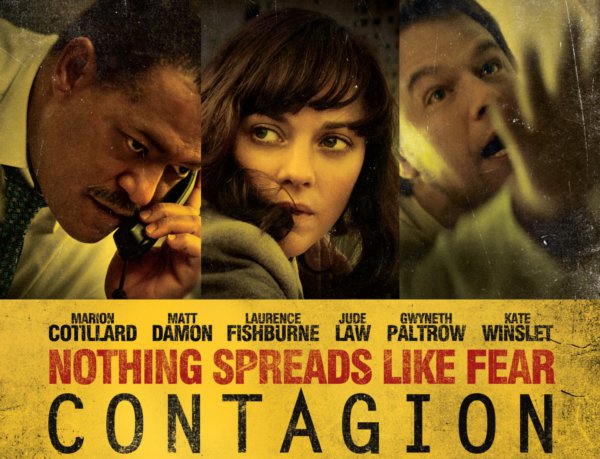
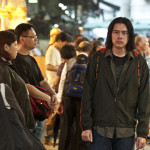
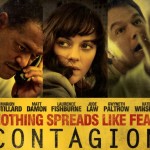

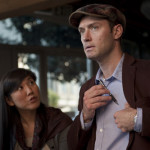
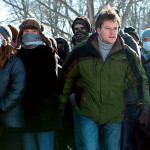
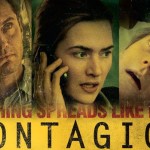

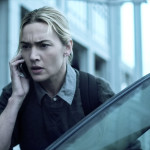



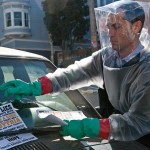
I’ve been browsing online more than 3 hours today, yet I never found any interesting article like yours. It抯 pretty worth enough for me. In my opinion, if all web owners and bloggers made good content as you did, the internet will be a lot more useful than ever before.